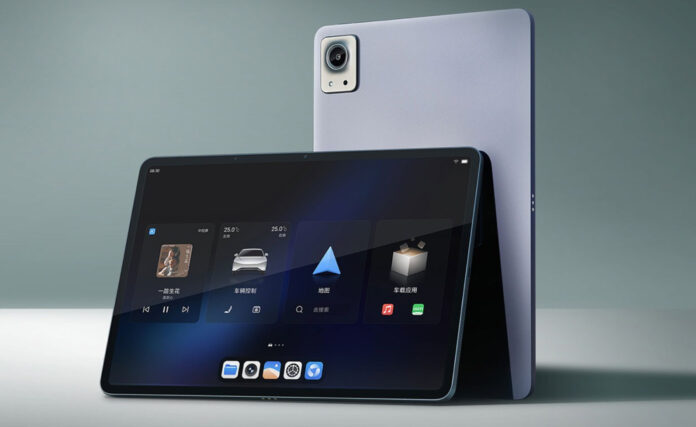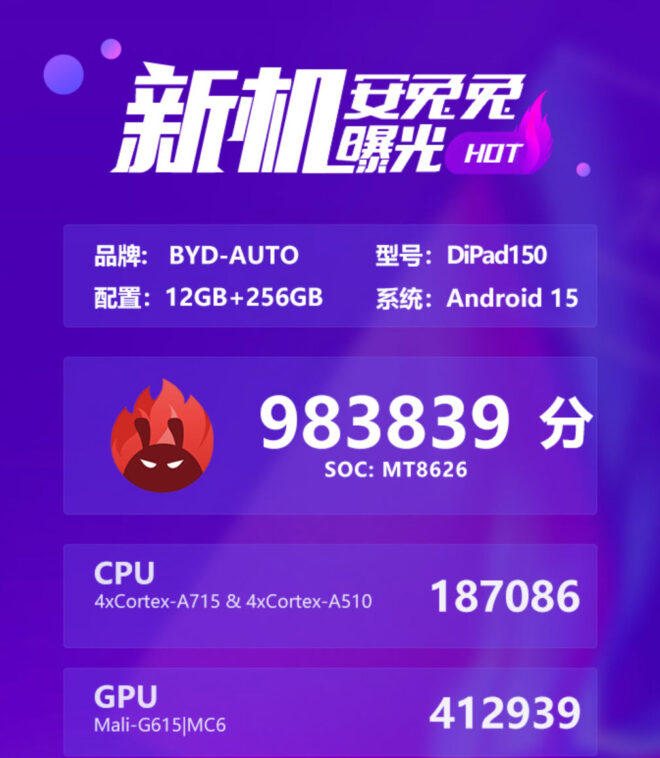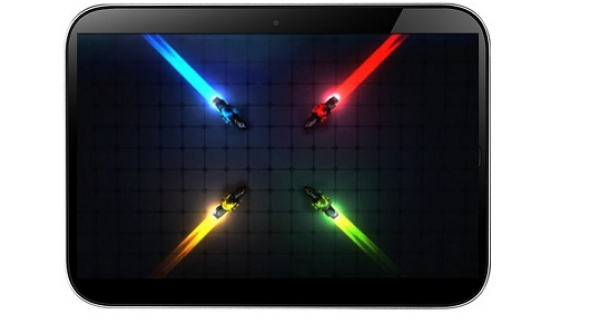BYD is extending its in-house technology ambitions beyond batteries and drivetrains with the DiPad150, a new self-developed in-car tablet set to debut in the Fang Cheng Bao Tai 7 SUV later this year. While the device was recently shown publicly, official specifications have yet to be confirmed — but a new AnTuTu benchmark leak has filled in many of the blanks.
According to the benchmark listing, the DiPad150 runs on MediaTek’s MT8626 chipset, featuring four Cortex-A715 cores and four Cortex-A510 cores clocked at up to 2.9GHz, paired with a Mali-G615 MC6 GPU. It packs 12GB of LPDDR5x RAM, 256GB of UFS 4.0 storage, and operates on Android 15 with a smooth 120Hz refresh rate. In AnTuTu tests, the tablet scored 983,839 points, breaking down into 187,086 for CPU, 412,939 for GPU, 180,815 for memory, and 202,999 for UX — placing it comfortably in the mid-range performance bracket.
Beyond raw specs, the DiPad150 signals a strategic move for BYD: full-stack control over the vehicle’s infotainment experience. The tablet is designed for native integration with the Tai 7’s systems, enabling multi-screen collaboration and tighter synchronization between hardware and software. This could reduce reliance on external tech partners and put BYD in a stronger position against competitors like Xiaomi, Huawei, and Nio, all of which have been pushing seamless cross-device experiences in China’s increasingly connected car market.
The Fang Cheng Bao Tai 7 will be the first to showcase the DiPad150, arriving with BYD’s advanced “God’s Eye” (DiPilot) driver assistance across all trims. Two configurations will be available: a lidar-equipped variant and a lidar-free model. Range figures are equally ambitious — up to 180km CLTC for the long-range AWD version and 135km CLTC for the standard 2WD, with a combined fuel-and-battery range of over 1,300km.
The Tai 7 is slated for launch in Q4 2025, and BYD is expected to formally unveil the DiPad150’s full feature set in the coming weeks. Given BYD’s deep background as an OEM electronics manufacturer for brands like Huawei, Xiaomi, and Oppo, the company’s move to bring that expertise in-house could mark the beginning of a broader consumer electronics push — potentially even into standalone mobile devices, following the path of Geely and its Meizu acquisition.
Post Footer automatically generated by Add Post Footer Plugin for wordpress.








